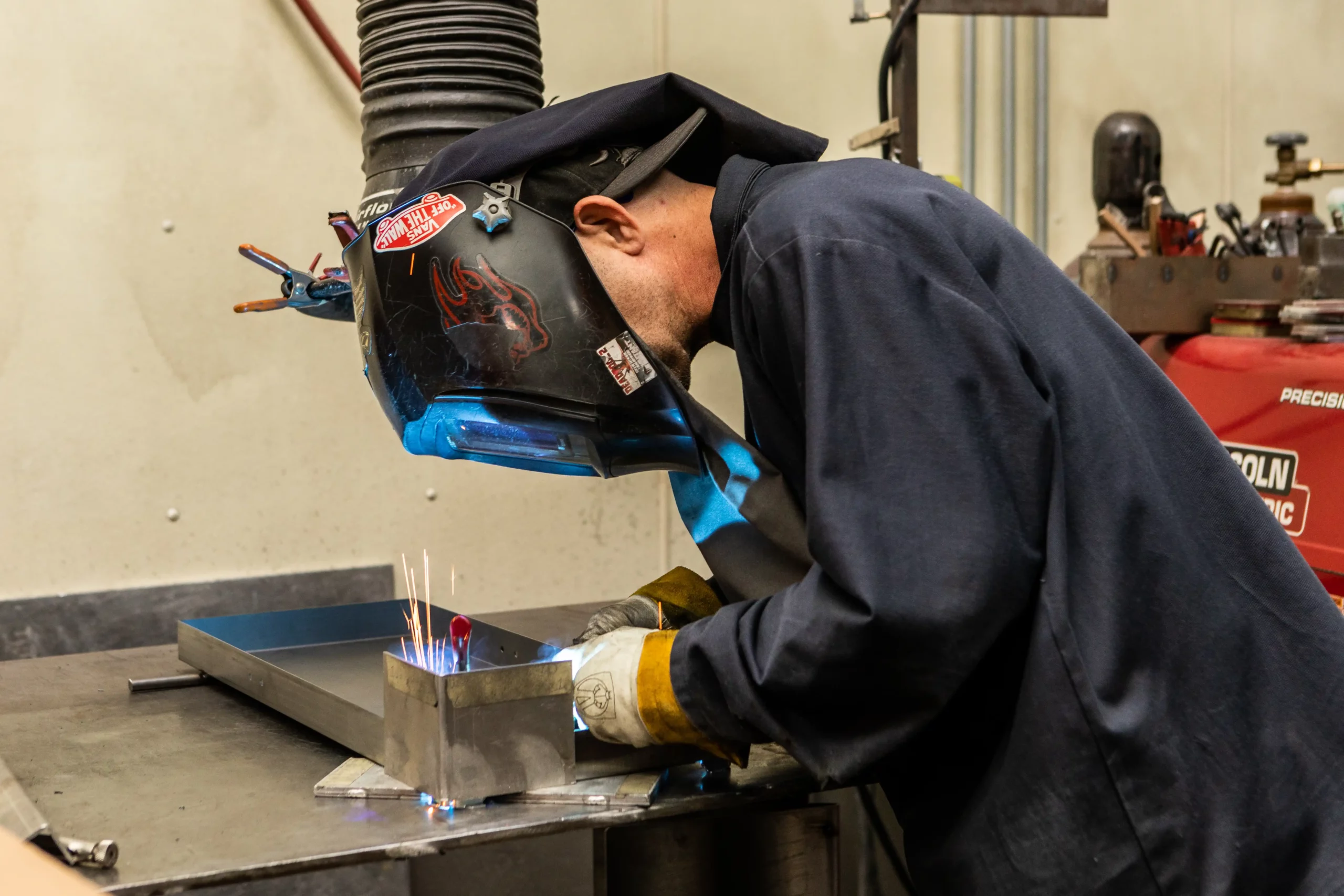Advanced Welding WPS: Tailoring Specs for Facility Projects
Advanced Welding WPS: Tailoring Specs for Facility Projects
Blog Article
Getting Welding Quality: Revealing the Keys of WPS Application and Optimization
In the world of welding, attaining quality is a quest that depends upon the precise execution and optimization of Welding Treatment Specs (WPS) These fundamental papers function as the backbone of welding operations, dictating the specifications and treatments needed for producing high-grade welds consistently. Nonetheless, the keys to opening the full potential of WPS lie not only in recognizing its relevance yet also in grasping the details of its application and optimization. By delving into the vital elements, strategies, difficulties, and ideal methods connected with WPS, a world of welding quality waits for those that agree to explore its depths.
Importance of WPS in Welding
The Significance of Welding Treatment Specs (WPS) in the welding industry can not be overstated, acting as the backbone for guaranteeing consistency, top quality, and safety and security in welding operations. A WPS provides in-depth instructions on exactly how welding is to be accomplished, consisting of vital variables such as materials, welding processes, joint design, filler metals, preheat and interpass temperature levels, welding currents, voltages, travel speeds, and much more. By adhering to a well-defined WPS, welders can maintain harmony in their job, causing regular weld top quality across different projects.

Crucial Element of WPS
Reviewing the essential components of a welding treatment requirements (WPS) is crucial for understanding its role in welding operations. One critical aspect of a WPS is the welding process specification, which describes the certain welding procedures to be utilized, such as gas tungsten arc welding (GTAW) or secured metal arc welding (SMAW) By including these crucial components right into the WPS, welding procedures can be standard, ensuring high quality, performance, and safety in welding operations.
Techniques for WPS Optimization

Second of all, training and credentials of welding workers according to the certain needs of the WPS is critical. Supplying thorough training programs and making certain that welders are licensed to perform procedures outlined in the WPS can lead to greater quality welds and lowered rework.
In addition, leveraging technology such as welding software application and tracking systems can aid in optimizing WPS. These tools can aid in monitoring variables, making sure criteria are within defined restrictions, and providing real-time feedback to welders, enabling them to make prompt modifications for enhanced weld quality.
Common Obstacles and Solutions
Facing obstacles in carrying out the techniques for WPS optimization can prevent welding procedures' performance and quality. One common difficulty is insufficient training or understanding of the welding procedure specs (WPS) amongst the welding group.
An additional challenge is the absence of proper documents and record-keeping, which is vital for WPS optimization. Without clear documents of welding specifications, materials used, and assessment outcomes, it ends up being challenging to determine locations for improvement and make sure uniformity in welding processes. Executing a durable documents system, such as electronic welding management software, can help improve record-keeping and promote data evaluation for constant renovation.
In addition, inconsistent welding equipment calibration and upkeep can position a considerable obstacle to WPS optimization. Routine equipment checks, calibration, and maintenance timetables must be abided by strictly to make sure that welding criteria are properly regulated and maintained within the defined tolerances (welding WPS). By attending to these common obstacles with aggressive services, welding operations can improve efficiency, high quality, and overall welding quality
Finest Practices for WPS Application
To make certain effective WPS implementation in welding procedures, adherence to sector standards and precise attention to detail are critical. When initiating WPS execution, it is essential to start by thoroughly comprehending the particular welding needs of the job. This entails a comprehensive evaluation of the welding procedure requirements, products to be welded, and the environmental problems in which the welding will take place.
Once the needs are clear, the next step is to pick the proper welding treatment that straightens with these requirements. This includes consulting the pertinent codes and criteria, such as those offered by the American Welding Society (AWS) or the International Organization for Standardization (ISO), to guarantee conformity and high quality.
In addition, documenting the entire WPS execution procedure is vital for traceability and quality assurance. Thorough documents ought to be maintained regarding welding criteria, material preparation, preheat and interpass temperature levels, welding his response consumables made use of, and any kind of inconsistencies from the initial treatment. Regular audits and evaluations of the WPS can help determine locations for enhancement and ensure recurring optimization of the welding process.


Final Thought
In final thought, the implementation and optimization of Welding Treatment Specifications (WPS) is essential for attaining welding quality. By recognizing the key elements of WPS, applying effective strategies for optimization, attending to common difficulties, and complying with best techniques, welders can make sure high-quality welds and safe working conditions. It is critical for experts in the welding sector to focus on the proper implementation of WPS to improve total welding efficiency and accomplish wanted end results.
The Relevance of Welding Treatment Specifications visit here (WPS) in the welding industry can not be overemphasized, offering as the foundation for making certain consistency, quality, and security in welding procedures. A WPS provides in-depth directions on exactly how welding is to be carried out, consisting of necessary variables such as products, welding processes, joint layout, filler metals, interpass and preheat temperatures, welding currents, voltages, travel speeds, and extra. One vital element of a WPS is the welding process spec, which describes the particular welding procedures to be made use of, such as gas tungsten arc welding (GTAW) or protected steel Visit This Link arc welding (SMAW) By including these crucial elements right into the WPS, welding treatments can be standardized, ensuring quality, effectiveness, and safety and security in welding procedures.
It is important for specialists in the welding industry to prioritize the correct execution of WPS to boost total welding efficiency and accomplish wanted outcomes.
Report this page